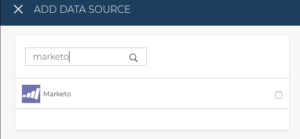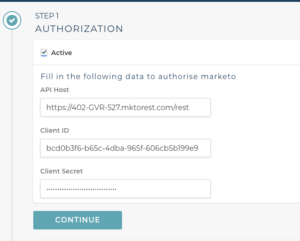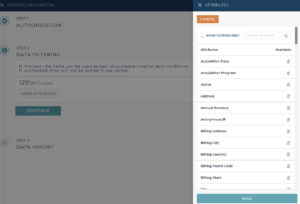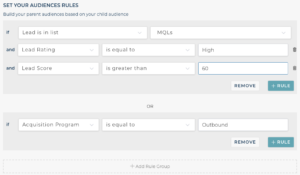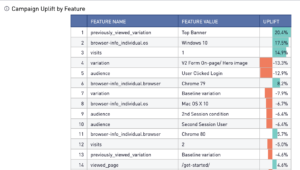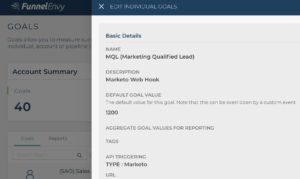Revamp Your B2B Landing Page: 5 Things to Consider
Today, we’re going to talk about what might be the most important page on your website. No, it’s not your home page, or your contact page, or that snazzy blog post that got lots of clicks. It’s your landing page.
Landing pages are the pages that leads land on right before they convert. This is the page that should sell your product or service best. If you don’t get your landing page right, your sales are going to be undercut.
If your current landing page isn’t getting it done, then it’s time for a refresh!
5 things to consider when revamping your B2B landing page
Below are some of the most critical things to keep in mind when revamping your B2B landing page for maximum effectiveness.
1. Have a clear value proposition
First things first, you need to have a clear value proposition. As soon as your lead starts scanning the page, they should be getting an idea of what your product can do for them.
This is especially important when you’re offering an unfamiliar product or service. Everyone already knows the value of a cloud storage service, but not everyone will understand why they need NAS drives in their office at first glance.
That said, familiarity doesn’t translate to a value proposition. If you’re selling in a popular market, then your value proposition is going to be what differentiates you. If everyone already knows what Slack, Zoom, Skype, and email are, then what unique selling point do you have to offer, and what’s the fastest way to showcase it on your landing page?
2. Make sure the journey from your marketing campaign to your landing page is cohesive
Next, you need to view your B2B landing page as your user’s end point in a marketing campaign journey. From the first time someone hears about your product to the moment they’re about to make a purchase, they are on a journey with your brand.
Visuals are a great way to tie this journey together. Using colors, images, logos, and keywords throughout your marketing campaign to your landing page will help solidify the landing page’s purpose for your leads. Conversely, changing up your visual narrative and tone on the landing page can dissociate the customer’s previous experiences from your landing page, breaking the customer journey at the last moment. Essentially, it’s crucial to stay cohesive with your language, messaging, visuals and call to action.
3. Have an obvious CTA front and center, and reduce navigation elements
Another key component of a cohesive B2B landing page is a clear call to action (CTA). CTAs are proven methods of pushing engagement, despite how naggy they may seem on the surface.
Not only do they work, but they help leads make their decision, too. If someone visits your landing page and either A) Doesn’t know what the page is for, or B) Can’t find the CTA, then they’re probably going to scroll around and then click away.
Don’t let this happen to you! Whether your CTA is a “Buy Now!” button, a sign-up form, or a choice between payment plans, make sure it’s the first or second thing that your visitors see.
4. Showcase your testimonials and partnerships on your landing page
For our last two tips, we’re going to tie everything together with actionable steps. The first of which is to establish trust quickly.
In B2C, entry trust (i.e., before the customer becomes a repeat customer) comes from reviews and word of mouth. Consumers want to hear that a product is great from their peers before they hear you say it.
B2B works much the same way, except that your customers’ peers are going to be other businesses. This means you’re going to want to rely on testimonials and partnerships rather than reviews.
Having familiar logos on your landing page as well as kind words will quickly ingratiate you with your leads. If they recognize brands that you’ve partnered with or see their needs and issues reflected in your positive testimonials, they’ll trust your product before they’ve made it to the checkout page.
5. Create a video to engage with the visitor
Our second actionable tip is to place a video on your landing page. It might sound crazy, especially if you’ve never invested in video content before. But in the same way that blog content drives leads, video content drives sales. In fact, it often does it better.
A landing page video should be a concise pitch of your product, about 2-3 minutes at the most. You should quickly explain what your product does, what problem it solves, how its features solve that problem, and if you have time, include a story from someone who has had success with your product.
In case you haven’t put it together, that’s your entire landing page in one engaging pitch. Except for your CTA, which should be sitting right next to the video.
Boost your B2B landing page performance with FunnelEnvy
While the five revamping tips listed above are a great way to get started, it’s far from everything you need to craft an engaging B2B landing page. And if you don’t have a lot of experience in this area, it can be tough to know how to even implement the above suggestions.
To supplement your experience, you can partner with FunnelEnvy. In case you couldn’t tell, we’re lead-generating experts, and we have a solid grasp on how to turn your landing page into a conversion machine. We offer services like Lead Gen Experiences, which will help you turn your traffic investment into a moneymaker, and Account Match, which will identify the most high-value accounts for your business and help you target them.
Reach out to the FunnelEnvy team today and start growing your business like never before.



